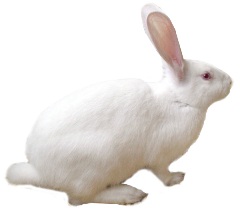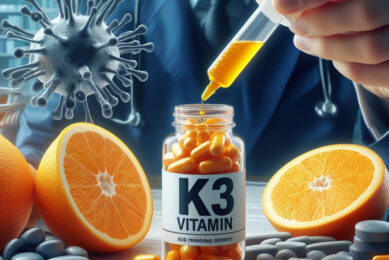Research: Enriched diets for rabbits

Hungarian scientists studied the effect of level and source of vitamin E addition of a diet enriched with sunflower and linseed oils on growth and slaughter traits of rabbits.
As part of a trial to improve the fatty acid profile, vitamin E content and shelf-life of rabbit meat, this work studied the effects of level and source of vitamin E dietary addition on growth and carcass traits in NZW rabbits.
Set-up
A 10.6 MJ/kg digestible energy diet without added oil and with 60 mg/kg synthetic vitamin E served as a control (C).
Five other diets were 4% oil-enriched, i.e. with 2% sunflower and 2% linseed oils and so having slightly higher digestible energy contents (11.4 MJ/kg) than the C feed.
In three oil-rich diets, only synthetic (S) vitamin E was used at 60, 150 or 300 mg/kg concentration (diet 60-S, 150-S or 300-S, respectively).
In two oil-rich diets, 60 mg/kg synthetic plus 90 mg/kg or 240 mg/kg natural (N) vitamin E (a fatty acid distillate, i.e. d-α-tocopherol) were used to reach the 150 mg/kg (diet 150-SN) or 300 mg/kg (diet 300-SN) level of added vitamin E contents.
In each group, 11 litters of 7 to 9 kits were studied in the pre-weaning period from 21 to 35 days and post-weaning to harvest at 84 days (n = 46–50).
Performance results
Litter and doe performance were poorer in the 300-SN rabbits than with lower levels of vitamin E.
Compared to the C rabbits, the 35–84-day mortality was significantly higher only in the 60-S rabbits.
The 84-day final weight of the 300-S and 300-SN rabbits was higher than the controls (2,745 and 2,733 vs 2,594 g).
The 35–84-day feed conversion of the C rabbits was poorer than any other rabbits (3.3 vs 3.0–3.1).
Carcass results
Carcass traits were assessed with sub-samples of 15 rabbits per group and were differently affected by both the level and origin of added vitamin E.
Chilled and reference carcass weights and dressing out percentages were higher in the 60-S and 150-S than in the C, 300-S and 150-SN rabbits.
Conclusion
Considering all traits studied the 150 mg/kg synthetic vitamin E dietary addition was best for maximising production.
However, the effects on meat quality and shelf-life should also be considered to give correct practical advices.
Our results confirm the importance of both the level and source of vitamin E when it is used as a dietary additive in oil-enriched diets.
To view references and further reading you must purchase this article.
 Beheer
Beheer









 WP Admin
WP Admin  Bewerk bericht
Bewerk bericht